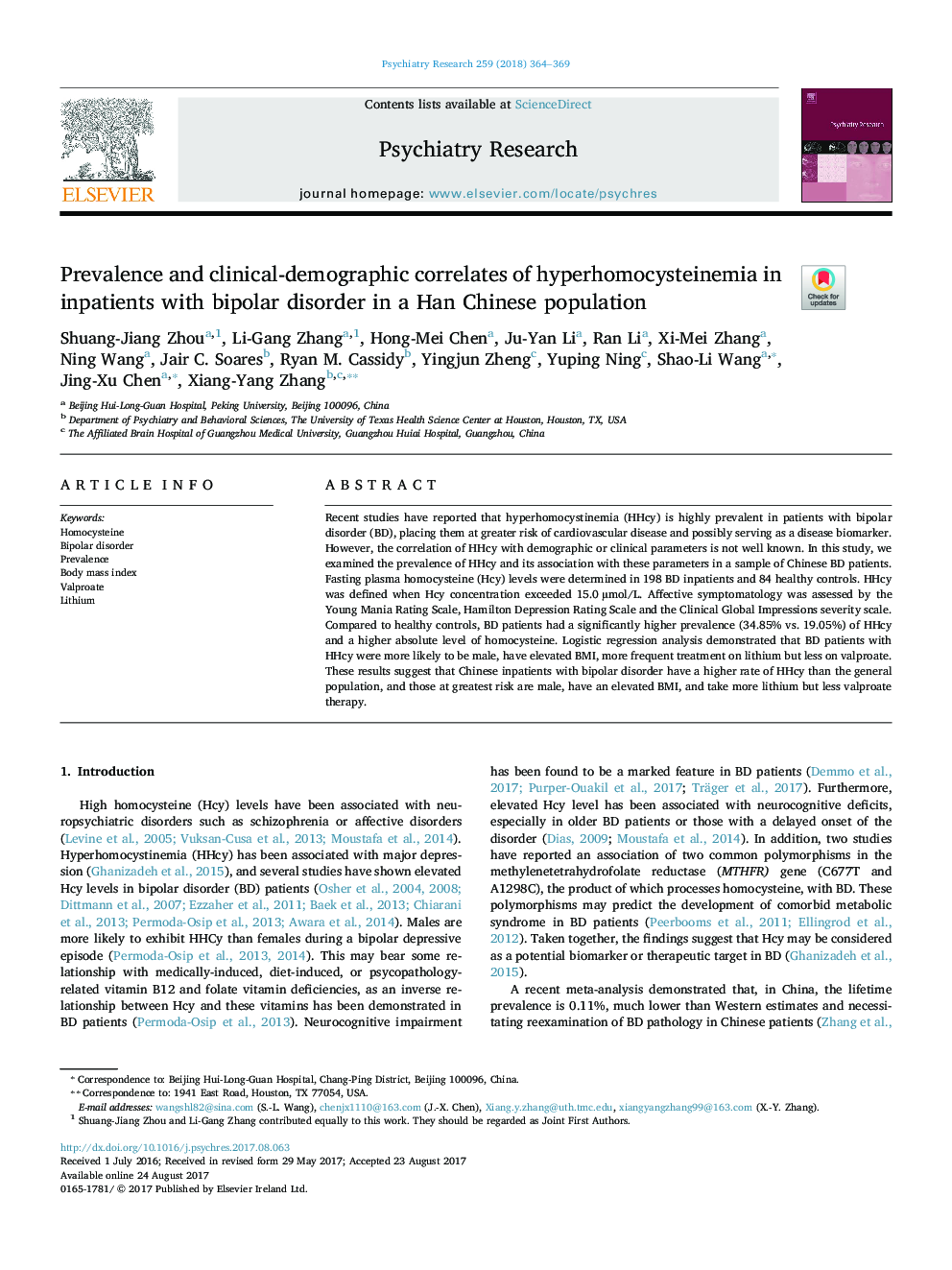| Article ID | Journal | Published Year | Pages | File Type |
|---|---|---|---|---|
| 6812029 | Psychiatry Research | 2018 | 6 Pages |
Abstract
Recent studies have reported that hyperhomocystinemia (HHcy) is highly prevalent in patients with bipolar disorder (BD), placing them at greater risk of cardiovascular disease and possibly serving as a disease biomarker. However, the correlation of HHcy with demographic or clinical parameters is not well known. In this study, we examined the prevalence of HHcy and its association with these parameters in a sample of Chinese BD patients. Fasting plasma homocysteine (Hcy) levels were determined in 198 BD inpatients and 84 healthy controls. HHcy was defined when Hcy concentration exceeded 15.0 µmol/L. Affective symptomatology was assessed by the Young Mania Rating Scale, Hamilton Depression Rating Scale and the Clinical Global Impressions severity scale. Compared to healthy controls, BD patients had a significantly higher prevalence (34.85% vs. 19.05%) of HHcy and a higher absolute level of homocysteine. Logistic regression analysis demonstrated that BD patients with HHcy were more likely to be male, have elevated BMI, more frequent treatment on lithium but less on valproate. These results suggest that Chinese inpatients with bipolar disorder have a higher rate of HHcy than the general population, and those at greatest risk are male, have an elevated BMI, and take more lithium but less valproate therapy.
Related Topics
Life Sciences
Neuroscience
Biological Psychiatry
Authors
Shuang-Jiang Zhou, Li-Gang Zhang, Hong-Mei Chen, Ju-Yan Li, Ran Li, Xi-Mei Zhang, Ning Wang, Jair C. Soares, Ryan M. Cassidy, Yingjun Zheng, Yuping Ning, Shao-Li Wang, Jing-Xu Chen, Xiang-Yang Zhang,
